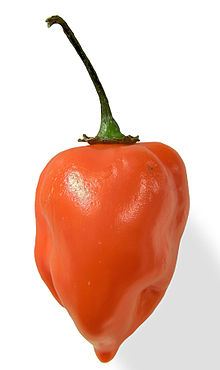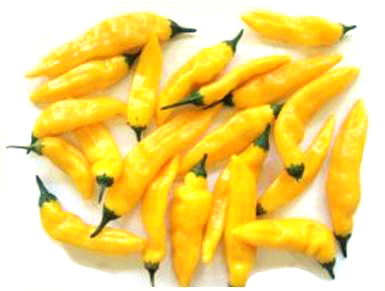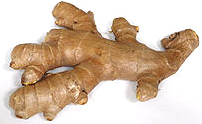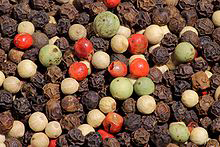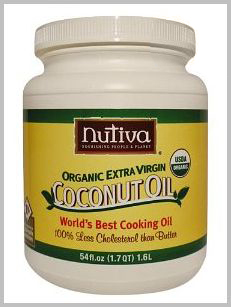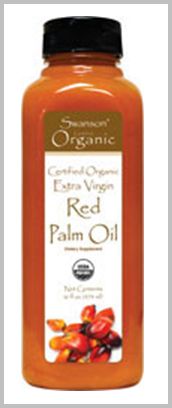The Truth About Herbs... "Dangerous" to Your Health... —or the Medical Monopoly's Bank Account...?
Important Health Information and Books
Copyright 2012 © by Sacred Truth Publishing. All rights reserved.
_______________________
If you appreciate the info contained herein, email us and let us know.
[email protected]" data-mce-href="mailto:[email protected]">[email protected]
[Copy and paste — "book query stm.christogenea.org" — as the subject of the email in case it goes to the spam folder.]
[Back to Important Health Information and Books — "Main Menu"]
_______________________
The Truth About Herbs...
"Dangerous" to Your Health...
—or the Medical Monopoly's Bank Account...?
[Below is a letter I wrote in response to an article on a web page I stumbled across, by some mainstream preacher who was condemning all herbs as "dangerous" and warning that people stay away from herbs and herb doctors, also saying that herbs are associated with the occult. He never replied.]
Disclaimer: Nothing below is intended to be misconstrued as medical advise. Nothing below is intended to be anything other than another point of view or opinion, based upon tens of thousands of pages of carefully researched material presented by true experts in this field.
Brother D_____, I respectfully submit that you truly know little about that which you are speaking; (having done your research with one eye closed in a poorly lit environment) namely, your article on herbs "Garlic, Ginko, & God." It is replete with error, half-truths, and shallow thinking. You read a book written by proponents of the drug establishment, and hold them up as "experts."
[That’s like reading a book on sheep raising that proports that sheep don’t need to be fenced in or guarded by sheep dogs—when this book is written by the wolves!]
Obviously, they will tout the party line. You mention that herbs are a "$4 billion" a year industry, yet you do not mention the gross annual income of the Pharmecuetical companies, AMA, CDC, nor surgery markets, which combined surpass $1 TRILLION/year.
[This can be compared to the difference between the distance between Washington DC and Philadephia, and the distance between earth and the moon!]
You also do not mention the fact that the medicines produced by pharmaceutical companies are primarily made from petroleum (which goes right into David Rockefeller or some other similar person’s pocket); nor that most all prescription (and even over the counter) drugs cause 10 times more contraindications, than the correction of the problem itself
—not to mention the fact that they cost 10-50 times more than herbs (which all goes into the pocket of one exclusive, powerful group of people), and that quite often, doctors just "guess" at which flavor to prescribe.
—nor the long-term problems caused by drugs, even relatively simple and safe ones such as antibiotics, that of depressing the immune system, causing the gross overgrowth of candida albicans systemically (which then depresses the immune system more, and then mimics many other problems, which doctors misdiagnose as something else and then misprescribe more antibiotics, making the whole problem cyclical and exponentially worse);
—nor have you shared that the AMA itself has confessed that they have no cure for the common cold, and that irresponsible prescribing of antibiotics by doctors has resulted in new mutant killer germs; that antibiotics are useless in treating the common cold, upper respiratory tract infections or Bronchitis; that well over 50% of people that go to doctors with the common cold, upper respiratory tract infections or Bronchitis were prescribed antibiotics by their doctor (12,000,000 presciptions/year wrongly prescribed) even though these drugs are ineffective, as well as harmful for reasons already stated above.
—nor do you mention that investigations and studies prove that a large percentage of medical operations (especially by-pass surgery) are not needed, do little good, and are often done for the wrong reasons, because it is a multi-billion dollar a year surgery.
[See the book By Passing By Pass, by Dr. Elmer Cranton, MD.].
—By-pass surgery according to 1986 (14-year old) statistics was a $6 billion dollar a year industry; 25,000 that were done were unneccessary (in one year study in 1983). A (10-year $24 million) study by the National Blood, Lung and Heart Institute showed that in the 16,000 patients they screened from 11 leading medical centers—0% showed any greater survival rate than those who did not receive the surgery and did nothing at all. $20-$40,000/operation, and no greater prolongment of life. That is quakery and theft! (not to mention the % of people who do not even survive the operation). Further, the chances of needing ANOTHER bypass surgery increase by 5% EVERY YEAR after a by-pass: a $20-$40,000 band-aid that will need several replacements. 10 years after bypass surgery 40% of patients will have those grafted arteries completed clogged, and the other 60% will again develop significant arteriel narrowing.
The AMA publicly admitted in its journal JAMA that 44% of by-pass surgeries are done for inappropriate reasons. Even when baloon angioplasty was developed as a "safe" alternative to by-pass, by-passes still INCREASED from 200,000 a year to 230,000 a year (in a 4 year period) while angioplasties themselves were also being performed 200,000 times a year—even though angioplasty itself often fails within a year, requiring another angioplasty or a bypass.
Nor do you mention that each year in the US 1,000,000 people die from Iatrogenic causes. Iatrogenic death is a fancy word for being killed by the doctor or the hospital. Iatros (physician) genic (beginning, source, cause. etc.) Therefore, Doctor related, caused, induced death. If they had stayed home and not gone to the doctor or hospital, chances are they would not have died.
[And this in great part is separate from the pharmaceutical drug induced deaths.]
Nor do you mention that before 1950 or so (before the rise of the petroleum-pharmeceutical industry), that is, before antibiotics—for 5,500 years of history, people have taken herbs (plants) for every physical problem known to man.
—nor do you mention that around 1900 only about 1 out of 25 people got cancer, whereas today it is about 1 out of 2.5, with some experts projecting that in a year or two 100% of people will get cancer in their lifetime—EVEN THOUGH THE CDC, AMA, AND OTHER ORGANIZATIONS HAVE BEEN RECEIVING BILLIONS OF DOLLARS EACH YEAR TO SUPPOSEDLY FIND A CURE FOR CANCER (which they will never do because that will then cut off the flow of all that money to them). When people ate the right foods (which included herbs) few people developed cancer or other such diseases.
[NOTE: "herb" is just another word for vegetables greens, plants: food!]
—nor do you mention that God created "every green herb, bearing its seed after itself" (that is, not genetically engineered, doctored up, or cross-bred by scientists—that is, doctors) for our use. God did not invent pharmeceutical companies.
—nor do you mention the fact that doctors try and play God by attempting to circumvent God’s Law of the harvest (you reap what you sow) by "healing people" (something only God can do) with their drugs and surgeries, and attempting to get out of paying the wages of sin that resulted from their years of wrong living and breaking God’s laws with some magic bullet. God created herbs. When we eat and live right, we injest those herbs. When we get sick from lack of the vital nutrients He created for us, we must return to extra consumption of those herbs. (most disease is simply "malnutrition"!)
You mention herbs are dangerous; yet you do not offer a comparison between the number of people who die every year from pharmaceutic (both over and under the counter) drugs each year, with the number of people who die from herbs each year. While the number who die from pharmaceuticals is probably in the millions, those who die from herbs (if any) will probably be in the single digits. Most all herbs, if too much herb is consumed, induce vomiting. Not so with drugs.
[Do you know how many people die from ASPIRIN every year?, however, no one has died from white willow bark—from which the oil industry took the idea to create aspirin (which is merely the artificial, laboratory-created, synthetic, unnatural form of white willow bark). Valium is likewise, the patented, highly lucrative (for a certain few) synthetic unnatural addictive form of Valerian root.]
—nor do you mention that many drug companies today are returning to herbs, since the synthetic drugs they are making are not working—yet they still manufacture them unnaturally BECAUSE THEY CANNOT PATENT AND SELL AT A HIGH PRICE, THOSE NATURAL HERBS THAT ANYONE CAN SIMPLY GROW FOR THEMSELVES!
—nor do you mention that scientific evidence each day shows that herbs do work, and more and more drug companies are returning to studying herbs and making products from herbs, since herbs work and since they then will be able to get a piece of the pie.
—nor do you mention that Europe does not have as great a monopoly on the drug industry, and for over a hundred years, europeans have used ginko, echinacea, garlic, kava kava, st. john’s wort, ginseng, golden seal, etc. with no dangerous side effects and remain happy and healthy.
—nor do you mention that many "herb" companies are owned by pharmaceutical companies, because they see a slice of the $4 billion/year pie that is passing their plate. While it is true that much of what is being sold on the market as herbs and vitamins, are poor quality, weak, tainted, and do little good, it is completely untrue that herbs do not work, that they are involved in New Age spiritism or other such nonesense! Herbs grown and prepared by the individual work best of all. There are also many reputable brands that can be bought. You get what you invest (whether you invest your time and energy to grow your own, or spend your money to buy those grown and prepared by someone else) and if you do not do your homework, you make a bad investment.
No doubt, many, many New Age freaks and pagan, antichrist religions incorporate their philosphy and false religion in with their herbal teachings and practices. This does not invalidate herbs any more than cults that incorporate the Bible into their false doctrine invalidate the Bible.
Herbs have nothing to do with voodoo, cutting the heads off of chickens, pyramid crystals, the chanting of mantras, yoga, spiritism, eastern mysticism, Transendental meditation, hypnotism, shamanism, mind reading, levitation, astral projection, channeling, or whoopie cushions! However, those satanic or severely deceived people who practice such false religion often incorporate herbs into their sin (except for the last example given). Many of these also incorporate music into their pagan practices—this does not make music itself wrong!
You state, "nearly ALL of these New Age treatments, remedies and potions are prescribed as workable on the basis of EASTERN RELIGIOUS PHILOSOPHIES AND BELIEFS. They claim their healing power, or beneficial treatment comes from the fact that they are able to harness the supernatural powers inherent in the human body."
This is nonesense. The only reason herbs work is because God designed herbs to have the nutritional constituents that the human body needs. It is the same thing as eating food. If you stop eating food, you will get weak and eventually die. One you start eating again, you will regain your strength and health—not because of any Kung-fu Zen energy released within your CHI spot resulting in the glowing of your aura and the redirection of your kharma—but because of the natural nutrients God placed within the food He created to keep us strong and healthy.
You also state using herbs can be dangerous. Hogwash. Few people ever die from herbs—and if they rarely do, it is as a result of some other factor in conjunction with the herbs, such as your own confession that KAVA can be dangerous and cause oversedation...by those also taking the prescription drug valium. Can’t you see that the danger here is VALIUM??!!
You also do not tell people that most all herbs are NONADDICTIVE! Drugs (like the VALIUM you mentioned) are very addictive and eventually cause deterioration and degenerative health problems themselves. Have you ever read the "tiny little" cautions or contraindications of pharmaceuticals (or listened carefully to the quickly whispered ones on tv or radio commercials) for all the popular fad pharaceuticals the drug comanies are pushing?
"...May cause heart palpitations, nausea, vomiting, gastrointestinal distress, internal bleeding, headaches, migrane, dizziness, liver damage, anal leakage, diarrhea, shortness of breath, heart problems, sexual disfunction, sleepiness, depression, listlessness, lethargy, anxiety, mania, liver or kidney disfunction, etc..."
—and many of these new drugs advertised on tv in just the past 4 years have killed more people than have ever died from herbs in the history of civilization!
You talk as though you know the matter....how many herbs have you yourself grown, prepared, and taken to see whether or not they work?
Any disease in the world can be cured with herbs...why? because most dieases are caused by the lack of these herbs in the diet over a period of many years.
Why do most people not heal themselves with herbs?—because they foolishly believe the disinformation they read from people such as yourself—and because they are too lazy and undisciplined to do what is right. They want an quick fix (liberty without responsibility)—to be able to then go on living their degenerative, unbiblical lifestyle. Most people are too lazy to get some fresh herbs, grow or prepare them themselves, and take a few minutes to read about the herbs to know how to use them.
People worship doctors as gods. What is the proof of this? Who do they trust more, the Doctor or God? Who do they obey, the doctor or God? Who do they run to first, the doctor or God? Whose will do they accept, the doctors or God’s? God says we reap what we sow, and we are sick because we disobey His laws, sin against Him, refuse to repent of and confess sin and stop sinning; to strengthen us, to teach us, to discipline us, and for God’s own glory when He receives the praise after one is healed through seeking obedience. When people get sick, do they pray first, search their own heart for sin, go to their pastor, have the elders pray for and annoint them—or do they run to the doctor or take an aspirin?
Most physical problems are caused by breaking God’s laws and eating wrong. This is corrected by asking for forgiveness, and repenting and demonstrating that resultant conversion (stopping sinful behaviour, turning around and then doing that which one should have been doing).
Your claim that herbs are simply "alternative drugs" is both dishonest and ludicrous. Sugar, chocolate, coffee, and tea are drugs too, if you apply them in a narrow, general definition meaning anything that produces a noticeable reaction when ingested (and thus dairy products, bread, grains, legumes, and nuts are "drugs" since most all people have slight allergies to such foods, since these foods are hard for the human body to digest, thus causing slight allergic reactions, such as increased pulse rate, heart palpitations, shortness of breath, sweating, mental fatigue and foggy head, anxiety, irritability, temporary memory problems, listlessness, lethargy, nausea, etc.).
Don’t confuse herbs with New Age/pagan religious practices. They are not one and the same. Don’t preach against herbs (the herbs God made)—preach against New Age paganism. Tell people to educate themselves, not hang on every word of some AMA physician—doctors know less about herbs than they know about prayer! The medical establishment is antichristian and unbiblical; yet you encourage people to go to a "licensed" doctor educated in evolutionistic, socialistic, humanistic "wisdom" (as you call it). Doctors are not taught about herbs, most doctors have never tried herbs, and a doctor who makes his money practicing the "slash, burn, and poison" method of medicine, is certainly not going to suggest you look into the matter and try some herbs any more than a Buick salesman is going to suggest you test drive a Ford.
Please forgive me for unloading all of this on you. I do not mean to be arrogant or attack you. I simply dumped out a lot of information and ideas matter of factly. I know what I am talking about. My dad has been a medical doctor for 30 years. He knows how corrupt and evil and unethical it is. He has also studied equally from the "alternative" side of the medical road. Drugs and surgery often do more damage than they do good.
Again, does anyone ever stop and ask himself; God says sickness and disease often come from sin, or because God is using it to teach me a lesson, or God is using this to bring glory to Himself...? Does anyone ever stop and ask himself, does God want me to have a baboon or a pig’s heart put in my chest to prolong my life another year...? Does anyone ever ask God what HE wants them to do...? When exactly is the time that God has decreed for a person to die and meet Him--When God decides, or after ever single attempt to keep the person alive has been exhausted...? Does God only get the left-overs...? Who is in control: God or the doctors...? Who do people consult: God or the doctors...?
I highly recommend you read Murder by Injection by Eustace Mullins. I’ve taken herbs for years. I grow my own. I incorporate no eastern mysticism. I grow the herbs; I read the Bible. That’s it. It’s amazing that civilization lasted long enough for the Medical monopoly to be established in the mid 1950s (a mere 50 years)—how ever did enough people survive for 5450 years? How cruel of God to make man pass through millenia of uncertainty and herbal quackery, disease, plague, and death until this time in history in which we are fortunate to have medical doctors outright kill over 1,000,000 people a year, while they rape and pillage and torture tens of millions more.
God bless you as you seek the truth and spread it to others. Robert
_______________________
Check out my foundational work, a very important book (though it is not health related, I mention it here for those who might not view the other pages at this site):
Uncovering the Mysteries of Your Hidden Inheritance
http://stm.christogenea.org/index.php/books-written-by-rab/12-the-foundational-work
________________________________
Copyright 2012 © by Sacred Truth Publishing. All rights reserved.

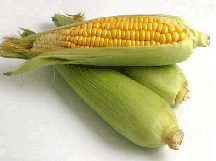
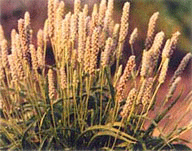
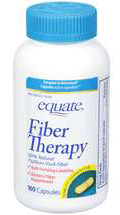 oon of psyllium fiber or a handful of psyllium capsules (Equate brand of capsules is about $4 at Wal-mart and it is a lot easier to take 8-12 capsules after a meal, snack, or desert, than to drink down a full
oon of psyllium fiber or a handful of psyllium capsules (Equate brand of capsules is about $4 at Wal-mart and it is a lot easier to take 8-12 capsules after a meal, snack, or desert, than to drink down a full 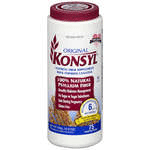 glass of the powdered fiber: Konsyl is a good brand of inexpensive powdered fiber, and without all the artificial color or sugar). Food manufactureers take all of the fiber out of most foods. It is not just old people who need fiber. Everyone does. Fiber absorbs toxins, fat, sugar, etc. and keep the contents of the colon fluid and moving, and thus helps to keep the colon clean (by scouring it and absorbing toxins) and free of residue which will develop like the layer of sludge inside the pipes from the kitchen sink (most disease begins in the colon; constipation leads to re-absorption of toxins and disease). However, take any medications or vitamin supplements at least an hour before or after you take psyllium because you will not get the full benefit from them and you will be wasting your money since the psyllium will absorb part of the medicines or supplements.
glass of the powdered fiber: Konsyl is a good brand of inexpensive powdered fiber, and without all the artificial color or sugar). Food manufactureers take all of the fiber out of most foods. It is not just old people who need fiber. Everyone does. Fiber absorbs toxins, fat, sugar, etc. and keep the contents of the colon fluid and moving, and thus helps to keep the colon clean (by scouring it and absorbing toxins) and free of residue which will develop like the layer of sludge inside the pipes from the kitchen sink (most disease begins in the colon; constipation leads to re-absorption of toxins and disease). However, take any medications or vitamin supplements at least an hour before or after you take psyllium because you will not get the full benefit from them and you will be wasting your money since the psyllium will absorb part of the medicines or supplements.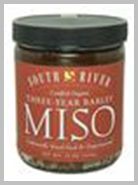
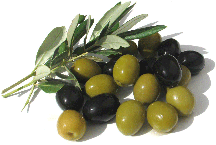 (Black/ripe, green/unripe, Kalamata/Greek, Sicilian, etc.) are a great snack, addition to most any meal, and an important food. Although they do not contain any great amount of nutrients (protein, vitamins, etc.) they are rich in oils and are an important part of the diet (as is olive oil itself, which should be the primary oil used in the diet, whether raw or cooked)—and have been in much of the world for millennia. Green olives are often too salty for me. When I open a new jar, I pour 1/3 - 1/2 of the brine out and replace it with water. In a few days the olives are perfect. Also, green olive brine makes an excellent addition to salad dressings and pickling brines; so it does not have to go to waste. However, black olive brine should not be consumed because black olives contain a toxic chemical, calcium oxalate (much of which leaches into the brine), about the same amount as sweet potatoes or whole wheat bread contain. Calcium oxalate is also found in rhubarb leaves (which should not be eaten nor fed to livestock). Okra and chocolate contain about 2.5 - 3x the amount of calcium oxalate that black olives have. Calcium oxalate stones account for 90% of kidney stones. Cranberry, lemon, and black cherry juice help dissolve kidney stones. Sicilian and Greek olives (of which there are numerous varieties) are even more bitter than regular green Spanish olives and contain many other nutrients. Larger grocery stores in larger cities often have a good selection.
(Black/ripe, green/unripe, Kalamata/Greek, Sicilian, etc.) are a great snack, addition to most any meal, and an important food. Although they do not contain any great amount of nutrients (protein, vitamins, etc.) they are rich in oils and are an important part of the diet (as is olive oil itself, which should be the primary oil used in the diet, whether raw or cooked)—and have been in much of the world for millennia. Green olives are often too salty for me. When I open a new jar, I pour 1/3 - 1/2 of the brine out and replace it with water. In a few days the olives are perfect. Also, green olive brine makes an excellent addition to salad dressings and pickling brines; so it does not have to go to waste. However, black olive brine should not be consumed because black olives contain a toxic chemical, calcium oxalate (much of which leaches into the brine), about the same amount as sweet potatoes or whole wheat bread contain. Calcium oxalate is also found in rhubarb leaves (which should not be eaten nor fed to livestock). Okra and chocolate contain about 2.5 - 3x the amount of calcium oxalate that black olives have. Calcium oxalate stones account for 90% of kidney stones. Cranberry, lemon, and black cherry juice help dissolve kidney stones. Sicilian and Greek olives (of which there are numerous varieties) are even more bitter than regular green Spanish olives and contain many other nutrients. Larger grocery stores in larger cities often have a good selection.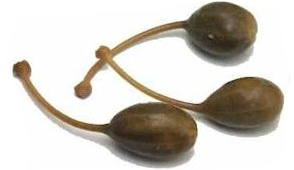
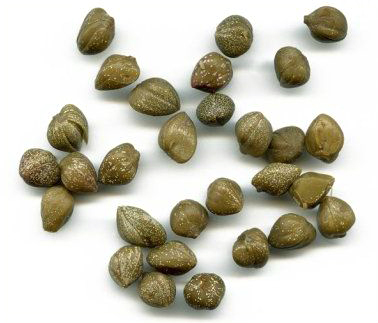
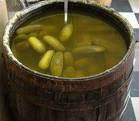

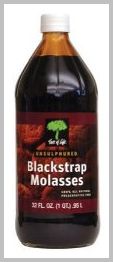
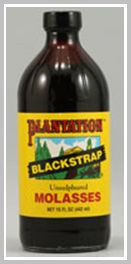
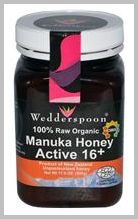

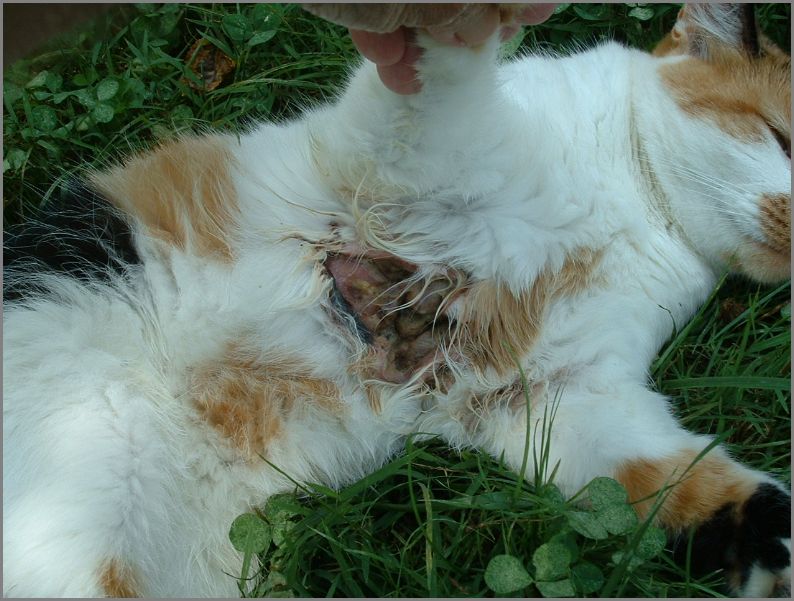
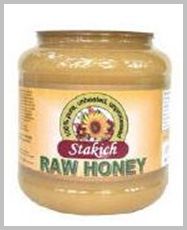
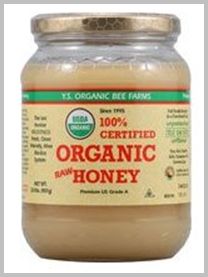
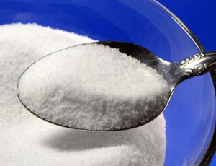
 e largest bottle for the best price. You can usually buy a large bottle of 1,000-1,200 mg., 400-500 caps for about $9-12. Watch the prices and when there is a good sale, buy numerous bottles and keep in a cool, dark, dry place (like a cellar). My arthritis was really bad a few years ago. It hurt to tie my shoe laces; my wrists, ankles, knuckles, and toes hurt—it felt as if I had sprained them. I started taking 20-25 capsules of the Omega fish oils each day (I took 5-6 every 3-4 hours). In about a month or so my arthritis cleared up by 98%. After I got the arthritis under control, I cut back to half to a third of that amount for daily maintenance. Of course, the oils are also good for the heart and if taken with meals als
e largest bottle for the best price. You can usually buy a large bottle of 1,000-1,200 mg., 400-500 caps for about $9-12. Watch the prices and when there is a good sale, buy numerous bottles and keep in a cool, dark, dry place (like a cellar). My arthritis was really bad a few years ago. It hurt to tie my shoe laces; my wrists, ankles, knuckles, and toes hurt—it felt as if I had sprained them. I started taking 20-25 capsules of the Omega fish oils each day (I took 5-6 every 3-4 hours). In about a month or so my arthritis cleared up by 98%. After I got the arthritis under control, I cut back to half to a third of that amount for daily maintenance. Of course, the oils are also good for the heart and if taken with meals als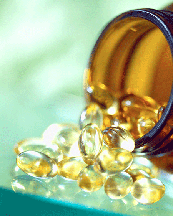 o helps slow digestion so that other fats are not assimilated too quickly. Of course, drinking enough fluid and especially pure water is also very important for arthritis or any health problem. Older people especially do not drink much because they don’t want to have to get up to go to the bathroom all the time... but it is the only way to stay healthy... and getting up to go to the bathroom 8 times a day may be the most exercise some people get—so they should drink up... you should urinate once an hour or you are not drinking enough. [Omega 3s / fish oil can act as blood thinners.]
o helps slow digestion so that other fats are not assimilated too quickly. Of course, drinking enough fluid and especially pure water is also very important for arthritis or any health problem. Older people especially do not drink much because they don’t want to have to get up to go to the bathroom all the time... but it is the only way to stay healthy... and getting up to go to the bathroom 8 times a day may be the most exercise some people get—so they should drink up... you should urinate once an hour or you are not drinking enough. [Omega 3s / fish oil can act as blood thinners.] 
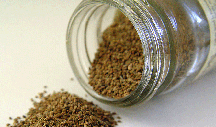 (or a heaping tablespoon) of celery seed washed down with a glass of water usually clears this up in 20 minutes. I can supply celery seed if interested (culinary celery seed in the grocery store is expensive; I can supply 1-pound bag of whole celery seed for 6.00 + P&H).
(or a heaping tablespoon) of celery seed washed down with a glass of water usually clears this up in 20 minutes. I can supply celery seed if interested (culinary celery seed in the grocery store is expensive; I can supply 1-pound bag of whole celery seed for 6.00 + P&H).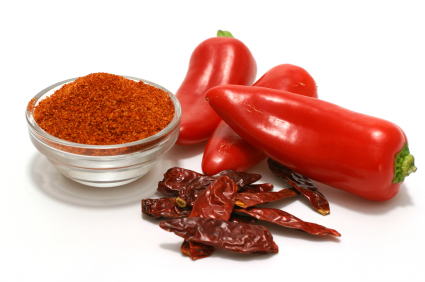 Cayenne pepper can help prevent, stop, and help recover from heart attack and stroke (Black pepper, is in an entirely different family, but will work if no cayenne is available, but it is nowhere as effective). Most all hot peppers (at least, most all on the American market) are in the Cayenne family. The hotter the better. Cayenne pepper should be eaten with each meal. Start with a little bit of a mild pepper (fresh, dried, or pickled) and work your way up. The more you eat, the more accustomed you will become and you will want more and hotter. It also acts as
Cayenne pepper can help prevent, stop, and help recover from heart attack and stroke (Black pepper, is in an entirely different family, but will work if no cayenne is available, but it is nowhere as effective). Most all hot peppers (at least, most all on the American market) are in the Cayenne family. The hotter the better. Cayenne pepper should be eaten with each meal. Start with a little bit of a mild pepper (fresh, dried, or pickled) and work your way up. The more you eat, the more accustomed you will become and you will want more and hotter. It also acts as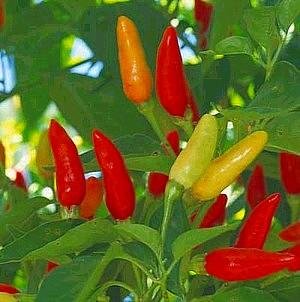 a mild endorphin-releaser, which can help with certain types of pain and give a feeling of euphorbia such as joggers experience. A bottle of cayenne should be carried at all times to use whenever eating out, as well as in cases of emergency. It increases circulation and doubles the efficacy of any herb/vitamin taken with it. It also stops bleeding internally and externally (whether taken internally or applied externally), including ulcers.
a mild endorphin-releaser, which can help with certain types of pain and give a feeling of euphorbia such as joggers experience. A bottle of cayenne should be carried at all times to use whenever eating out, as well as in cases of emergency. It increases circulation and doubles the efficacy of any herb/vitamin taken with it. It also stops bleeding internally and externally (whether taken internally or applied externally), including ulcers.